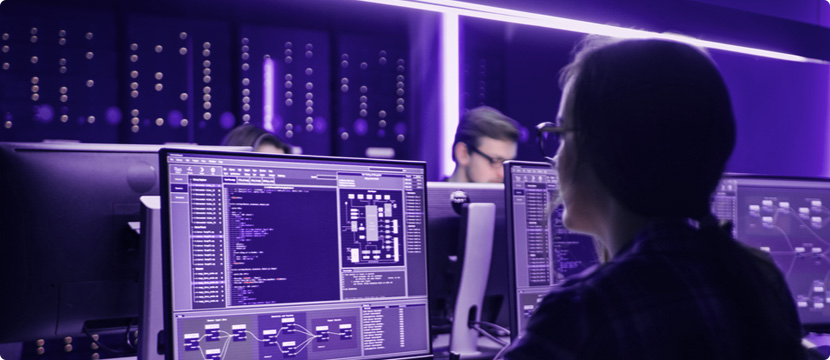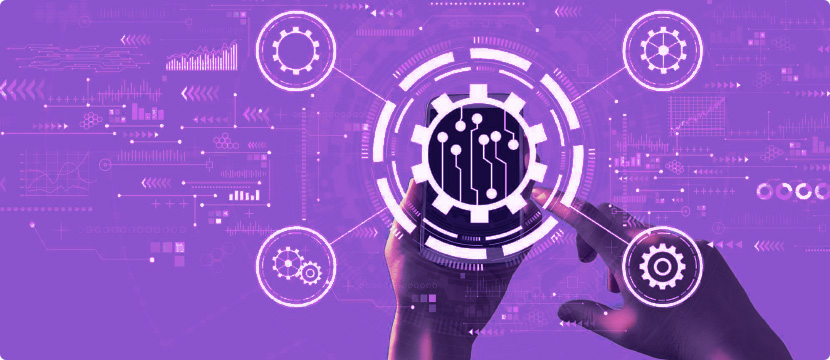Transformation at Scale and for Scale
Openreach is one of the largest communication companies in the world. A wholly-owned subsidiary of the BT Group, Openreach maintains, provides, and manages the UK’s network system, helping businesses both large and small, residences, and individuals connect digitally. It also supports the operations of the 640+ communications providers who supply phone, broadband, and ethernet services to the entire country.
The company has now begun the exercise of extending and upgrading its infrastructure to deliver faster and more reliable broadband with increased capacity, including a new full-fibre network. Our plans to provide ultra-reliable and gigabit-capable FTTP broadband to over three million homes and businesses in the UK’s hardest to serve communities will accelerate the UK’s post-COVID recovery. These efforts are part of a staggering £12 billion investment that sees us build ‘Full Fibre’ infrastructure to no fewer than 20 million premises in a development that will deliver substantial benefits for rural and urban communities, supported by the appropriate regulatory and political conditions. An exercise of this magnitude naturally requires diligence, care, and precision.
Our competition, smaller network providers such as cable and new fibre builders, often has the advantage of speed, agility, and significant investments with none of the legacy issues that Openreach faces. However, Openreach has the experience, knowledge, and strong credibility in building and running networks.
Our challenge is to leverage all this experience while not getting bogged down in some of the legacy issues – and that’s where technology, used right, can achieve the best of both worlds for us.
Openreach uses technology primarily to drive better customer service for a lower cost – so anything that can take the waste out of processes, simplify workflows, or intervene on jobs before they go wrong merits an investment. Additionally, since the company works on a complex legacy system stack that presents considerable agility challenges, it is increasingly using technologies that can either over-ride, ignore, or connect to the core system instead of an expensive and cumbersome rip-and-replace. Some examples include better apps for the field engineers, cloud-based data analytics, and predictive algorithms, alongside versatile RPA (Robotic Process Automation)-driven applications. We are looking for low cost, practical solutions that don’t require wholesale system change. In the future, as the company seeks to fully fibre the UK, it has an opportunity to invest in a new way of working so that its fibre legacy is more modern and slick.
Staying Connected. Staying Strong.i
As an institution of national strategic importance, Openreach has played a vital role during the crisis, ensuring that the UK stays connected to continue to function despite the several limitations imposed by the current situation.
Safety remains a top priority, and we have worked with our Communications Provider (CP) customers to mitigate the impact of the essential Government restrictions on service delivery. Our engineers have been given ‘key worker’ status to continue to focus on the repair and maintenance of services that support critical national infrastructure, essential public services, and customers at risk. During the height of the lockdown engineers did not enter customer residences, with clearly specified exceptions where required. We have had to make several other critical decisions at speed, and the resulting output has meant that we have achieved our goals and more in a way we didn’t know could be done previously. With demand fluctuations necessitating quick shifts in human resource allocation, we have dynamically managed our workforce to match requirements. We also moved to a 100% work from home environment in just a week, managing our engineers and communication through Workplace by Facebook. To put things in perspective, we pretty much changed all of our processes to be COVID-ready in a matter of months.
Using Bleeding-edge Technology to Reinvent Operations
COVID-19 has proven to be an enormous challenge, especially for an organisation reliant on minimal disruptions and a highly engaged engineering workforce. From the outset, we saw this challenge as an opportunity to revolutionise a legacy operational business with new and emerging technologies. Technology and innovation have had a crucial role to play in this regard.
When we began plotting our automation-led transformation journey, it was clear that any technology intervention would need to augment and assist our highly experienced engineers’ work. By harnessing the synergy between our vastly experienced engineers with their decades of experience and modern technology, we believed that Openreach could generate exponential improvements across our service lines.
With this goal in mind, in partnership with EdgeVerve, we have deployed RPA solutions to add flexibility to our existing system stack, ensure business continuity, and react to this novel and unprecedented situation. In addition to eliminating the need to add a high number of temporary staff, RPA has also helped Openreach guarantee its engineers’ safety and efficiency, allowing work to continue smoothly while minimising risk.
With businesses increasingly turning to technology-driven solutions to maintain service levels, it is no surprise that 56% of respondents in an ongoing EdgeVerve and SSONii survey see process automation as an essential addition to their operations model. Process automation is our preferred solution for efficiency and accuracy at Openreach. This has been helped by our already robust infrastructure and enduring partnership with EdgeVerve that has been in place for over two years. During this time, we have automated over 50 processes – around one every fortnight. As such, Openreach has an established RPA capability with technical expertise, administrative experience, and a developer team capable of building automation within the Openreach system stack.
With the continued support of EdgeVerve developers, we use AssistEdge to build all RPA solutions. Let’s take a detailed look at how Openreach uses RPA and other cutting-edge technologies to future-proof its operations.
Innovating for Resilience
RPA has helped us address COVID-19 disruptions through two custom bots: wicketkeeper robots and the at-risk customer robot. For the uninitiated, in cricket, a wicketkeeper is a player who stands behind a batsman to gather any missed or left balls. Similarly, our wicketkeeper robots catch tasks that an engineer can’t complete because the customer or a member of the customer’s household shows COVID-19 symptoms. If an engineer needs to visit such a home, they can return the task with a reason code that our wicketkeeper robot ‘catches’, resultingin the job being postponed for 21 days. After 21 days the robot will release the job for re-allocation. Over 4000 transactions have been processed by the wicketkeeper robot with a peak of usage coinciding with the peak in infection rate. This robot kept our engineers safe without the need to stand up a desk team.
The at-risk customer robot for CP customers is a superb example of standing up RPA quickly, especially for simple processes. The at-risk customer robot helps Openreach identify and prioritise vulnerable people who are shielding and have totally lost their telephone / broadband service. It works by allowing CPs to flag vulnerable customers to Openreach using a keyword in the notes field when they place an order or fault. The robot then trawls through the notes for the keyword and highlights these tasks to the task dispatch system which will then prioritise the tasks and notify the engineer by SMS that they are visiting a customer who is shielding. The second phase of the bot’s implementation will expedite the appointment on any such orders to drive prompt resolutions.
Assistive automation has also been vital for reducing time to competence and improving average handling time on calls from engineers needing help from our desk teams. This proved vital to maintaining business continuity whilst migrating our desk based teams to work from home.
Helpfully, when it comes to assistive automation, our EdgeVerve RPA is integrated with EdgeVerve’s SIDE application, and overall we have three user interfaces for desk teams that are powered by RPA in the background with SIDE as the front-end user interface. Such user interfaces, as well as reducing the average handling time of the most common type of calls from our engineers by 20%, also reduce the time to competence from weeks to days. Without this ability to quickly train additional desk resources to take the calls our engineers need to get customers in service, the transition to getting 100% of desk workers working safely from home would have been significantly more difficult.















